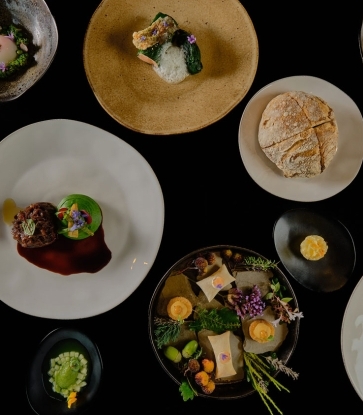Cherry. Roma. Beefsteak. These bright-red varieties of tomatoes are common ones that often find their ways into our salads or in our sandwiches.
Then, there are heirloom tomatoes with their rainbow of colors and array of flavor profiles. But what really earned them their name? And why do they go for so much more at the market? Here are some nuggets of information you should know about the heirloom tomato.

1. Most of the supermarket varieties aren't heirlooms.
So what makes an heirloom tomato an heirloom? Heirloom, a term used interchangeably with heritage, refers to varieties of tomatoes whose seeds have been passed down for generations.Heirloom varieties are open-pollinated. This means you can save seeds from heirloom tomatoes, plant them and expect them to grow into new tomato plants. If two or more varieties are planted close to one another, you may end up with a new variety.

2. Heirloom tomatoes are seasonally grown.
This means they should not be made available all year round. The best time to set out tomato plants is after danger of frost, which varies from country to country. So if you're getting a tomato that claims to have traveled from the USA in the dead of winter, you know you're not getting an heirloom. (At least, not a good one.)
3. They come in all shapes, shades and colors.
Unlike the underripe tomatoes we're used to, some heirlooms are green at full maturity. And the ones that come dressed in purple aren't actually bruised.Yellow heirlooms tend to be milder than the tart, sharp reds and the greens have a light, zesty bite. The darker varieties have more savory qualities than that of the sweet ones.

4. They're pricier.
They may be tastier and juicier—but they also come with a price. Heirlooms have been bred for their taste and flavor and not for the toughness of their skins so they bruise easily. This means extra care is needed in its transportation and storage, resulting in its heftier price tag than commercial varieties.



















